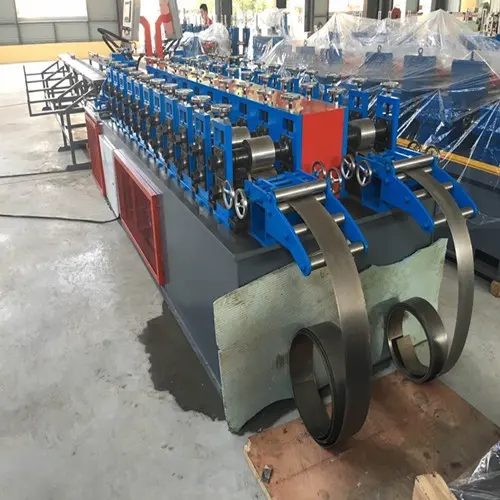
Understanding Strut Channel Roll Forming
Strut channel roll forming is a critical manufacturing process that has gained immense popularity in various industries, particularly in construction, automotive, and manufacturing. The versatility and strength of strut channels make them indispensable components in framing systems, providing support for various structural elements. In this article, we will explore the nuances of strut channel roll forming, its applications, benefits, and the technology behind the process.
What is Strut Channel?
Strut channels, also known as C-channels or support channels, are metal sections with a C-shaped cross-section. They are designed to provide support and stability to a variety of structures, such as walls, roofs, and machinery. The C-shaped design allows for easy attachment of various components, making strut channels an essential part of many framework systems.
Roll Forming Process
Roll forming is a continuous bending operation in which a long strip of metal is gradually shaped into the desired profile through a series of rollers. This process is particularly suitable for large production runs of uniform cross-sectional shapes.
1. Material Selection The process typically starts with selecting the right material, which is usually steel, aluminum, or other alloys, depending on the application. The choice of material impacts the strength, weight, and corrosion resistance of the final product.
2. Forming Roll Design The design of the forming rolls is crucial. Each set of rolls is engineered to perform a specific section of the shaping process, with the shape gradually taking form as it passes through multiple roller stations.
3. Feeding and Cutting The metal strip is fed into the roll forming machine, where it is shaped incrementally. After achieving the desired length, the channel is cut to size with precision, ensuring consistency across all units produced.

4. Finishing Techniques The finished strut channels may undergo additional processes such as galvanizing, painting, or powder coating to enhance durability and corrosion resistance. These finishing techniques play a vital role in extending the service life of the strut channels, especially in harsh environments.
Applications of Strut Channels
Strut channels are versatile and can be used in numerous applications, including
- HVAC Systems They are often used to support ductwork, providing a stable framework that is crucial for efficiency and safety. - Electrical Installations Strut channels serve as a robust support system for conduits and cable trays, ensuring that electrical components are securely mounted. - Construction Framing In building construction, strut channels facilitate the assembly of structural supports, providing flexibility and strength to frame systems. - Manufacturing Equipment They can be utilized as mounts for machinery, providing a strong base while allowing for adjustments as needed.
Benefits of Using Strut Channels
The use of strut channels in roll forming offers several benefits
- Efficiency The roll forming process is highly efficient, enabling the production of large quantities of uniform products in a relatively short amount of time. - Cost-Effective Due to the streamlined production, the overall cost per unit is reduced, making it an economical choice for builders and manufacturers. - Versatility Strut channels can be adapted to a wide range of applications, and their design can easily be modified to meet specific requirements. - Strength and Durability The roll forming process enhances the strength of the metal, making strut channels capable of handling significant loads and stresses in various applications.
Conclusion
Strut channel roll forming is a vital process in modern manufacturing and construction. Its ability to produce strong, versatile components efficiently has revolutionized how structures and systems are built. As industries continue to evolve, the role of strut channels will only become more significant, offering reliable solutions for a myriad of applications. Understanding this process not only helps in appreciating the technology behind it but also highlights the importance of these components in our everyday lives.